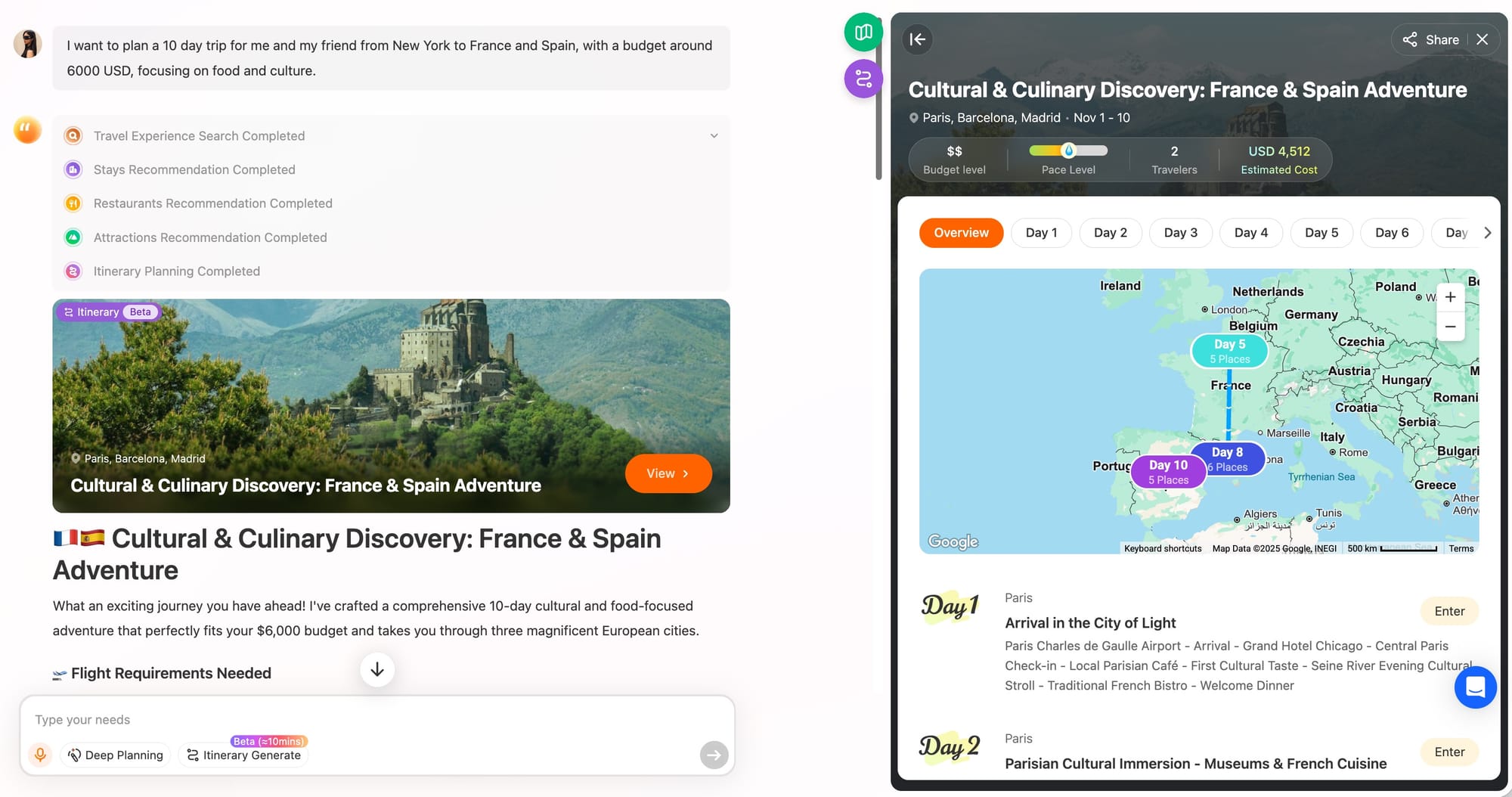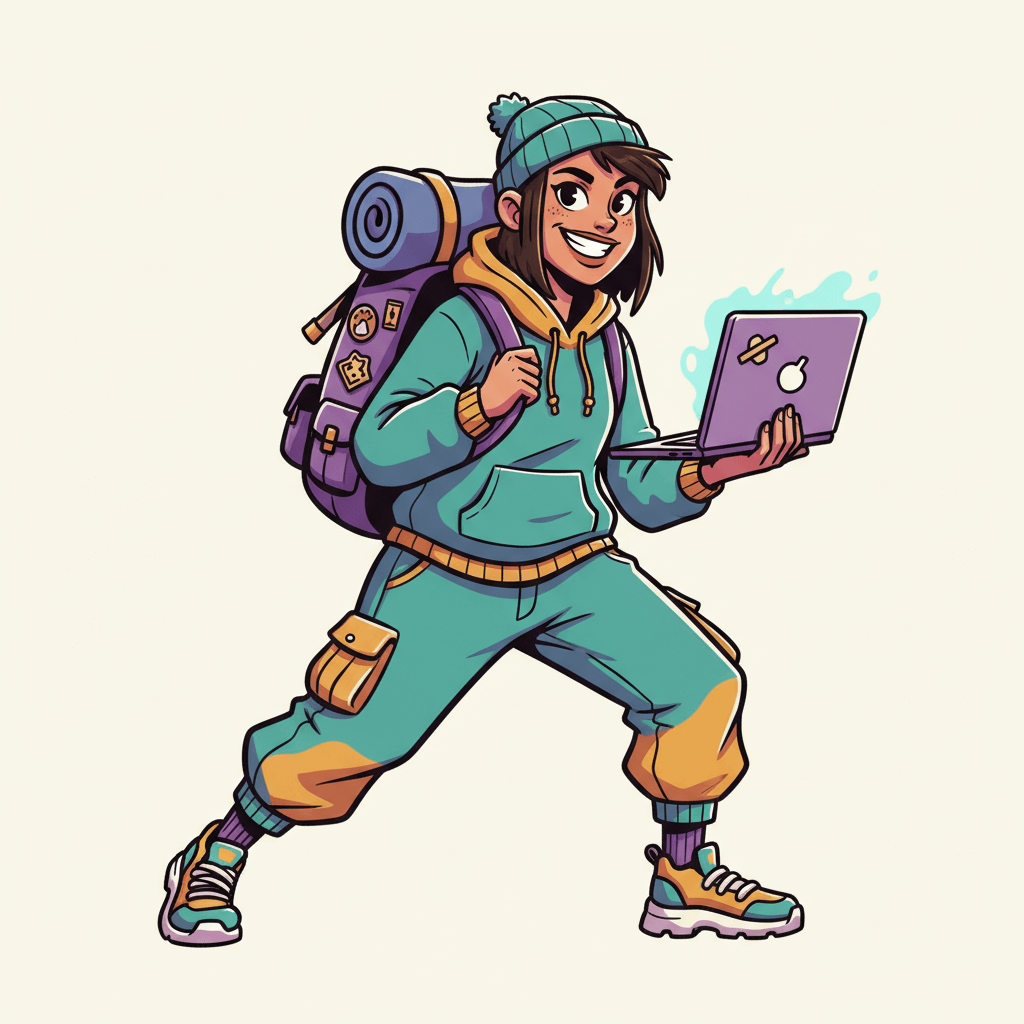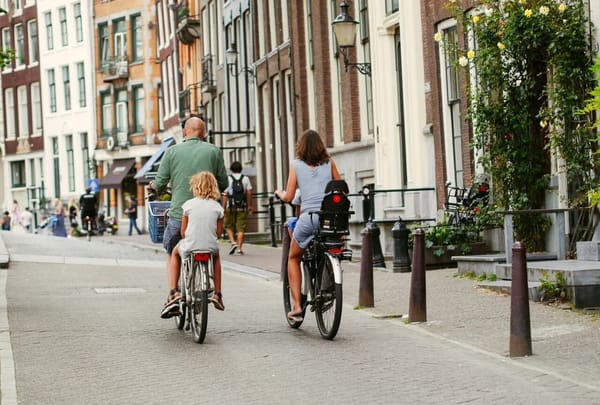AI is no longer a background tool in travel: it’s the engine powering how we plan, book, and experience trips in 2025. From price prediction and personalization to carbon-smart choices and local discovery, AI quietly orchestrates the decisions behind every journey.
This post explores how AI is transforming key travel trends this year and what that means for travelers seeking smarter, faster, and more sustainable adventures.
1. Market snapshot: demand, capacity, and behavior
Global travel has rebounded strongly through 2024 and into 2025. Airlines have restored routes, though capacity still varies by region. Travelers now balance value and convenience by often using AI-powered planning tools to optimize both.
Machine learning models behind platforms like Google Flights or Hopper analyze billions of fare changes to forecast prices and suggest when to book. This makes “data-driven intuition” accessible to everyday travelers.
2. Personalized Recommendations Powered by AI
AI personalization has advanced far beyond simple filters and category tags. Modern platforms now synthesize past bookings, real-time behavior, and conversational inputs to anticipate what travelers want before they even search.
Large-scale recommendation systems now power modern travel planning. They use neural networks and preference modeling to understand each traveler. The result? Trip ideas that feel naturally aligned with your unique style and priorities.
The result is faster discovery, fewer irrelevant options, and a more seamless planning flow that turns inspiration into action almost instantly.
3. Dynamic Bundles and Real-Time Offers
AI is also reshaping how travel products are packaged. Instead of static deals, dynamic pricing engines continuously recombine flights, hotels, and experiences based on demand, inventory, and predicted conversion likelihood.
McKinsey (2023–2024)[1] found that dynamic bundling can boost transaction value by double digits. Behind the scenes, reinforcement learning algorithms adjust prices in milliseconds to surface the most appealing combinations.
For travelers, it feels seamless: one smooth checkout with optimized timing and cost which without the spreadsheet chaos.
4. Carbon-Aware Planning and Sustainability Signals
Sustainability has evolved from a moral preference into a practical feature of trip planning. AI now helps travelers understand and act on their environmental impact.
Modern travel platforms estimate the carbon footprint of each route, flight, or hotel stay, and use predictive models to suggest greener alternatives. Such as replacing short-haul flights with high-speed rail or choosing lower-emission accommodations.
This makes it easier for travelers to make environmentally conscious choices without extra effort.

5. Local Discovery Through Intelligent Review Analysis
Travelers increasingly favor authentic local experiences over major tourist hubs. AI enables this by processing millions of user reviews, local business listings, and geo-tagged photos to find hidden gems that match a traveler’s personality.
Natural language models identify sentiment and context: surfacing “neighborhood favorites” instead of over-advertised attractions. The result: a more human, less algorithmic feeling trip, ironically powered by smarter algorithms.
6. Multi-Modal Itinerary Optimization
The future of planning is end-to-end orchestration, not fragmented search.
AI itinerary engines now integrate flight, rail, ferry, and rideshare data into one adaptive plan. Graph optimization models compute the best combination of time, cost, and sustainability.
For travelers, this means no more juggling apps or timetables. Platforms generate cohesive itineraries that update automatically when disruptions occur—a major leap in trip reliability.
7. The AI Technologies Behind the Shift
The invisible intelligence behind 2025’s travel revolution includes several complementary systems:
- Predictive Models: Forecast flight prices and availability based on real-time supply and historical demand.
- Recommendation Engines: Learn user patterns to propose personalized trips and upgrades.
- Natural Language Interfaces: Allow chat-based trip planning through conversational AI, simplifying complex decisions.
- Sustainability Estimators: Calculate route emissions dynamically to suggest eco-friendly alternatives.
- Generative AI Itineraries: Tools like iMean AI or Layla turn a short chat into a structured, day-by-day travel plan.
Together, these tools transform planning from research-heavy to conversation-driven.

8. New Traveler Habits in 2025
Price-aware yet convenience-focused:
Travelers are becoming more price-sensitive but still prioritize comfort and flexibility.An Amadeus survey (2025) found that nearly 79% of travelers now consider flexible change or cancellation policies “very important” when booking[2]. AI-powered tools help these users track fares and compare flexibility options in real time, reducing the stress of last-minute changes.
Chat and visual planning:
Conversational and visual planning tools are replacing long search sessions. According to Phocuswright (2025), 78% of travelers say generative AI has already improved how they plan and book trips[3].These chat-based assistants turn vague ideas into actionable itineraries, allowing travelers to co-create their plans interactively.
Flexibility and insurance:
AI systems increasingly offer disruption scores and automated protection options, guiding users toward refundable fares or travel insurance when risks are high.
EY’s Future Travel Behaviours Observatory 2025 report shows that younger travelers, in particular, value flexible payment and cancellation options as part of their digital booking experience[4].
Health and safety:
Aggregated AI dashboards compile local health data and advisories, helping travelers make quick, informed decisions about destinations.
Yet YouGov (2025) finds that only 30% of U.S. travelers feel “comfortable” using AI tools in travel planning, while 40% remain hesitant [5]: highlighting that trust and transparency still matter as much as automation.
9. Practical Tips for AI-Enhanced Travel
- Cross-check predictions: Compare two or three AI tools for better price confidence.
- Set precise alerts: Use route-specific notifications to catch short fare drops.
- Favor flexibility: When AI forecasts high disruption risk, pay for changeable options.
- Use sustainability filters: Let AI optimize your route, not just your price.
- Save backup plans: Ask AI tools for alternates: trains, nearby airports, or day swaps.
Conclusion
AI has quietly become the unseen travel companion of 2025. It analyzes patterns we can’t, predicts prices before we check, and designs itineraries that flex with real-world changes.
From dynamic pricing and personalized bundles to carbon-smart routing, AI is reshaping not just how we plan trips—but how we think about travel itself. Whether booking peak-season flights or crafting a mindful slow-travel route, AI-powered insights help travelers act with confidence, speed, and purpose.
References:
[1]McKinsey & Company. (2023–2024). Travel Industry and Dynamic Packaging Analyses.
[2] Amadeus (2025). Travel Statistics Q1 2025.
[3] Phocuswright (2025). From Hype to Habit: Generative AI Adoption in Travel.
[4] EY (2025). Future Travel Behaviours Observatory 2025.
[5] YouGov (2025). Comfort with AI in Travel Planning Dips Among Younger Americans.








